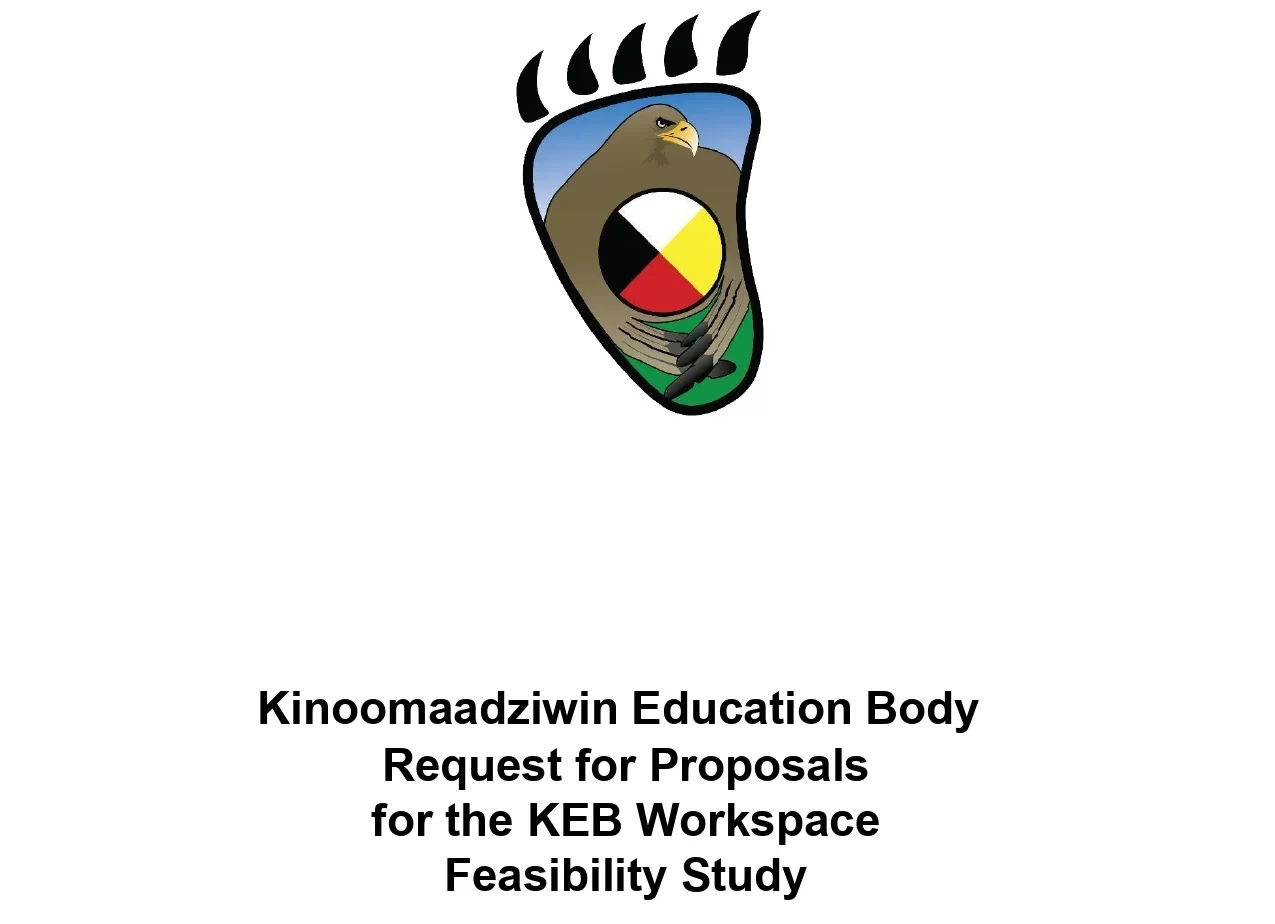Workplace Feasibility Study Call for Proposals
 1.0 General Overview
1.0 General Overview
The Kinoomaadziwin Education Body (KEB) is issuing this Request for Proposals
(RFP) for a qualified firm/individual to complete a feasibility study for the KEB
workspace. The KEB currently leases office space at Nipissing First Nation. The
feasibility study will support decision-making on whether the KEB should invest in
building an office or consider other options for workspaces.
The KEB expects to select the highest scoring Firm/Individual based on a structured
scoring evaluation. The scoring evaluation (Section 7 and Appendix 1) considers the
following:
a. ability to perform the required service;
b. experience;
c. approach to the project;
d. personnel assigned to the actual project work;
e. costs of the project;
f. time to complete the project;
g. reference checks; and
h. clarity of the submission
2.0 Anishinabek Education System Information
The Anishinabek Education System (AES) includes 23 Participating First Nations, their
Local Education Authorities, four Regional Education Councils, and the KEB, the central
coordinating body for the 23 Participating First Nations. The AES has also established a
Chiefs Committee and a Youth Council.
Participating First Nation and Local Education Authorities
There are 23 Participating First Nations in the AES. Each Participating First Nation has
law-making power and authority over education from JK to Grade 12 on-reserve and may
set up a Local Education Authority (education board or committee) to support and manage
the delivery of education programs and services at the community level. The Participating
First Nations vary in terms of overall population and student population. For example, one
First Nation operates schools from JK to Grade 12; other First Nations operate elementary
schools only; one First Nation only operates a high school; and other First Nations do not
operate schools on-reserve. A complete list of the Participating First Nations is set out in
Appendix 3.
Regional Education Councils
Each Participating First Nation belongs to one Regional Education Council (REC). The
REC provides opportunities for networking and for determining First Nation and regional
education priorities. Each Participating First Nation appoints two individuals to represent
the First Nation at REC level.
Kinoomaadziwin Education Body
The Participating First Nations work together through a central administrative structure
called the KEB. The KEB takes direction from the Participating First Nations and supports
the First Nations in their delivery of education programs and services. The KEB is
responsible for liaising with the Government of Canada and the Province of Ontario on
education matters.


